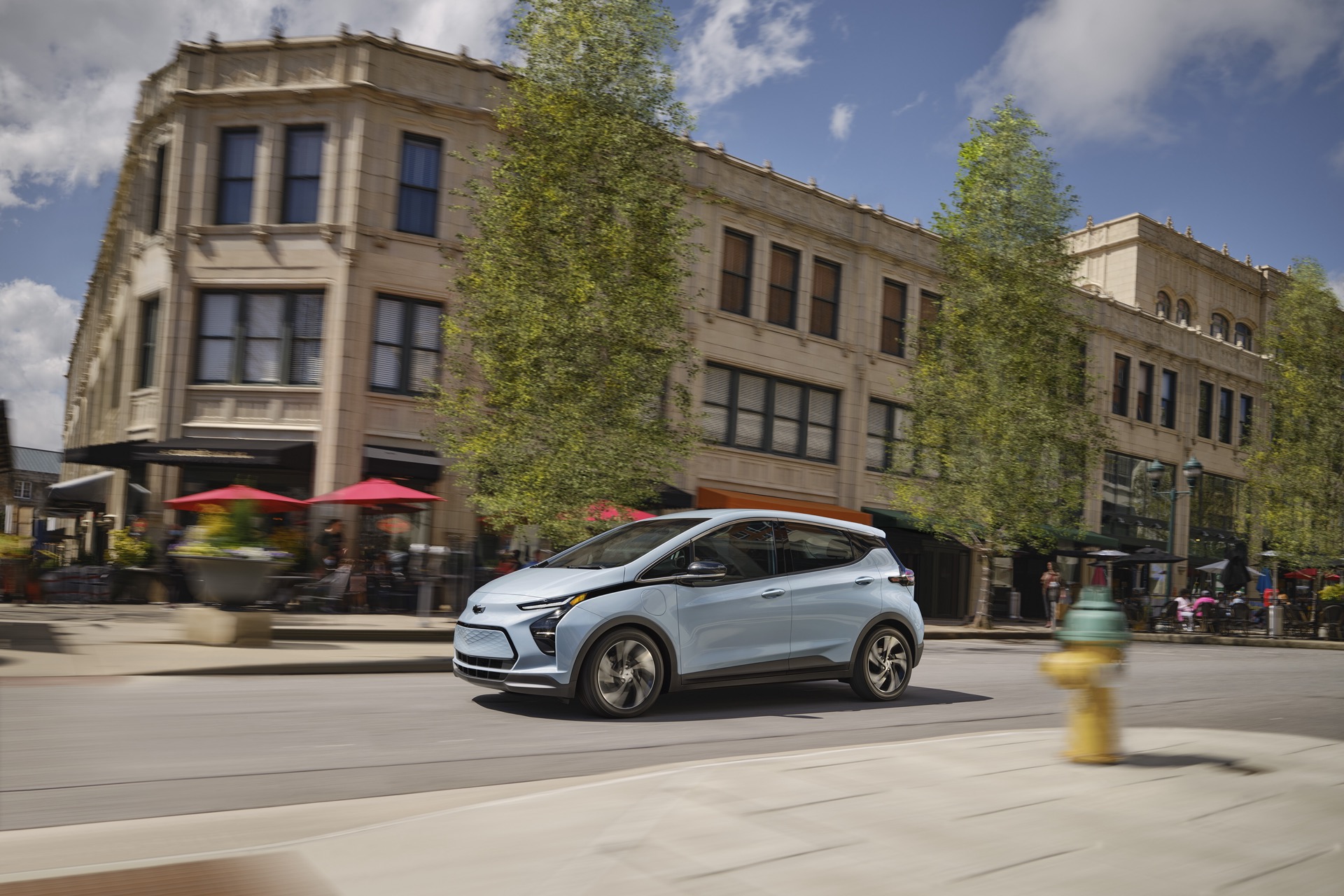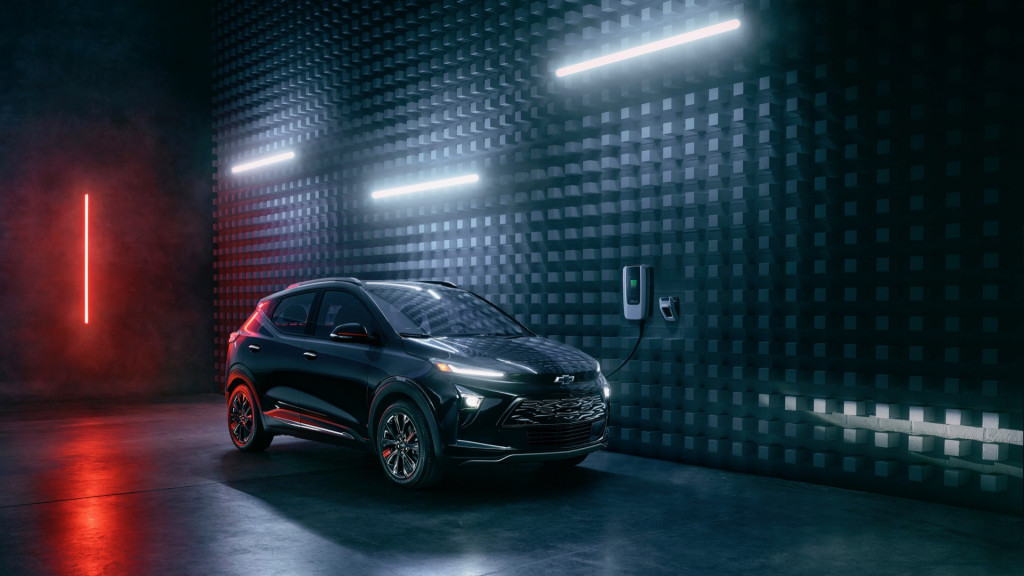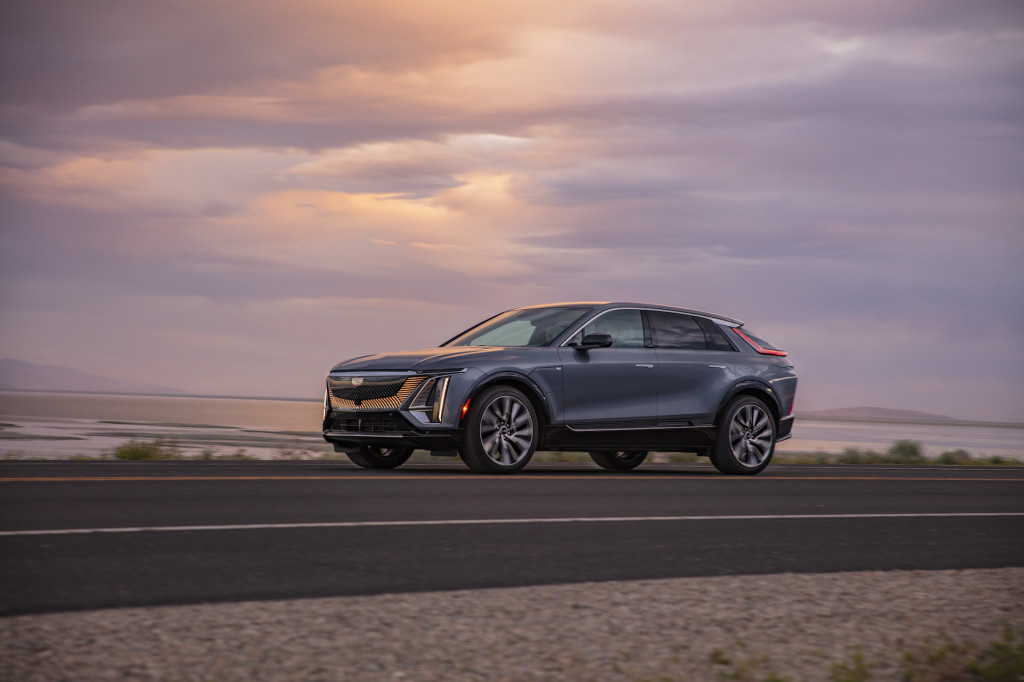
Chevrolet Bolt EV and Bolt EUV sales surged in the third quarter, General Motors announced Monday in its quarterly update, while sales of newer EVs based on the Ultium architecture were just a trickle.
The two Bolt variants set a quarterly sales record, with a combined 14,709 sales, GM said, adding that in response to robust demand it plans to increase global production to more than 70,000 units for the 2023 calendar year, up from a projected 44,000 for the 2022 calendar year.

2023 Chevrolet Bolt EUV Redline Edition
GM dropped prices on the Bolt EV and EUV earlier this year, and it even offered incentives for some of the previous model years that were still on dealer lots. That was because of a large-scale battery-related recall that halted production of the Bolt EV for months in late 2021 and early 2022.
Meanwhile, sales figures for Ultium EVs, which use common battery modules, a wireless battery-management system, and other components that GM intends to use as the building blocks for a wide range of future EVs, were minuscule.
GM said it delivered just 411 GMC Hummer EV pickup trucks and 76 Cadillac Lyriq SUVs—the only two Ultium models currently in production—during the quarter. While both are expensive vehicles with lower intended sales volumes than the Bolt EV/EUV, they are also seeing robust demand. The entire first-year production run of the Lyriq is already sold out, in fact, and GM earlier this year said it was increasing Hummer EV production to meet demand.

2023 Cadillac Lyriq
Lyriq deliveries only recently started, and GM indicated it will needed to ramp up battery production from Ultium Cells LLC—its joint venture with LG—to further expand production of both the Lyriq and Hummer EV.
"Ultium Cells opened its first cell plant, located in Warren, Ohio, which will help enable GMC Hummer EV and Cadillac Lyriq production to increase in 2023," the automaker said in a statement.
GM is also looking at much higher sales volumes for the Chevy Equinox EV due next year. It wears the name of a ubiquitous gasoline-powered crossover SUV and will have a $30,000 base price, GM claims, although the entry-level version won't be available at the start of production.
